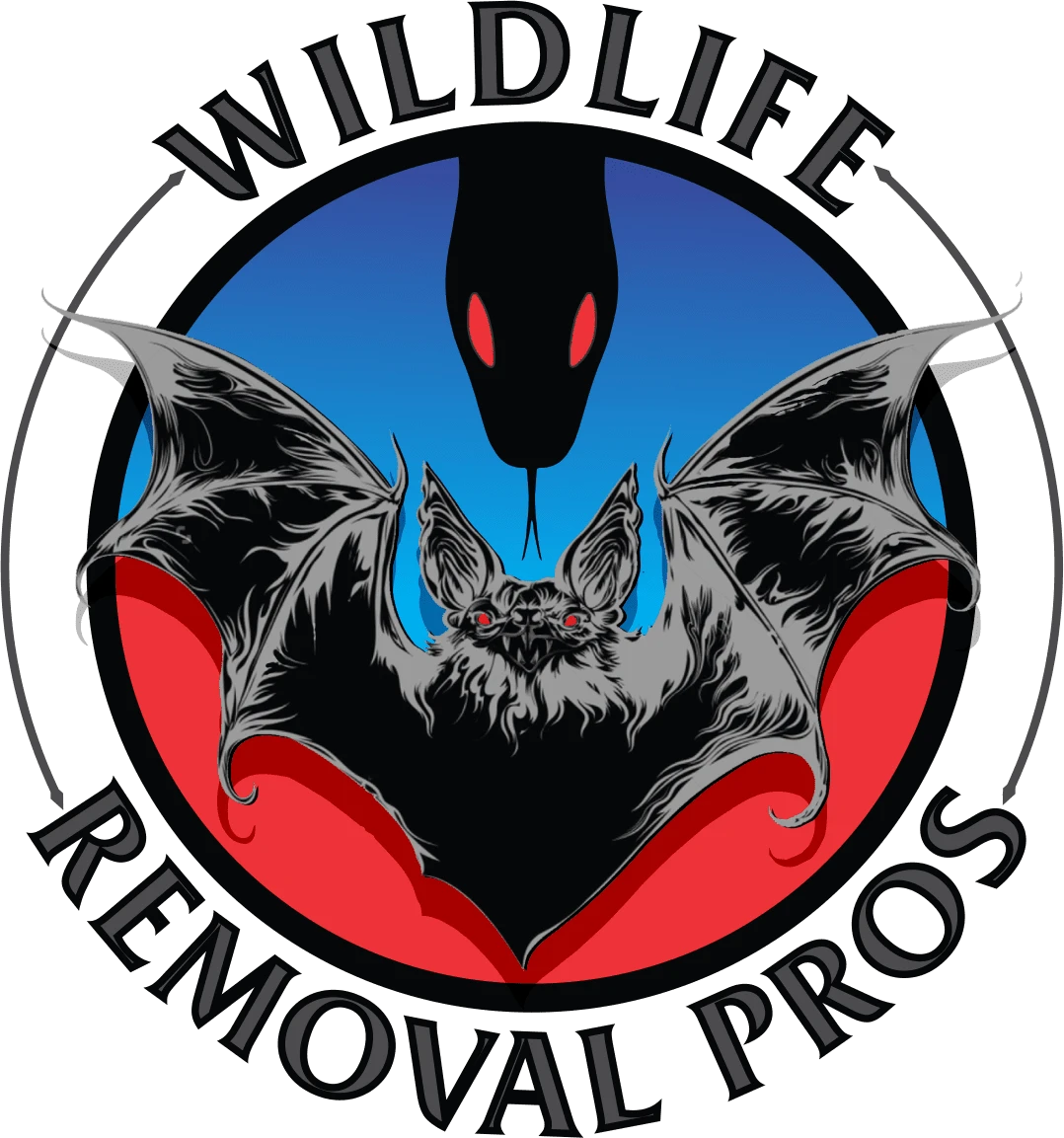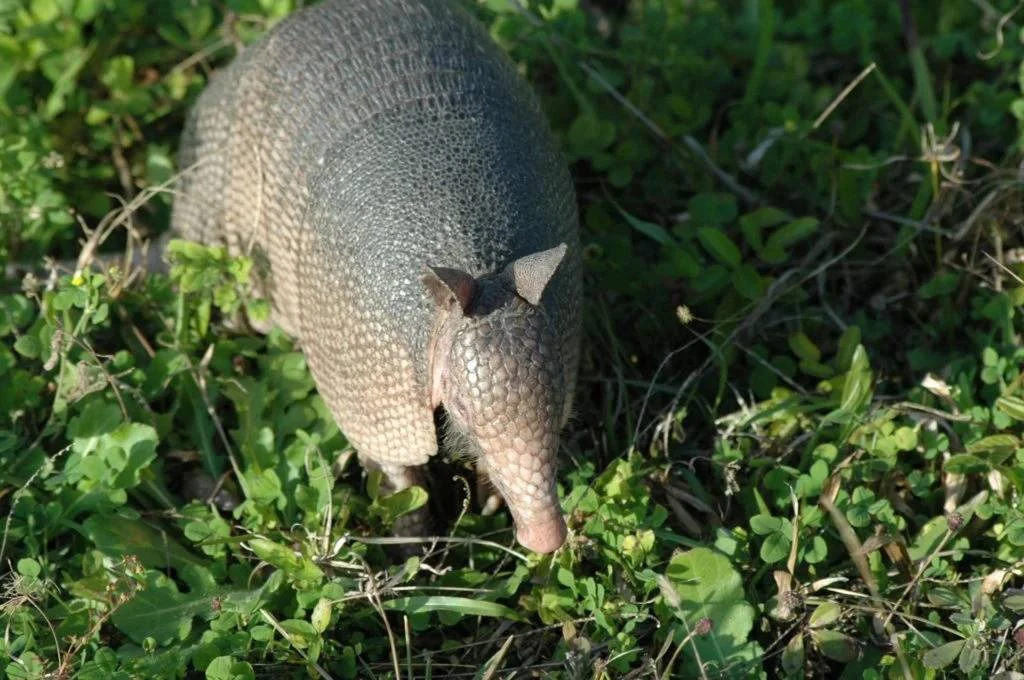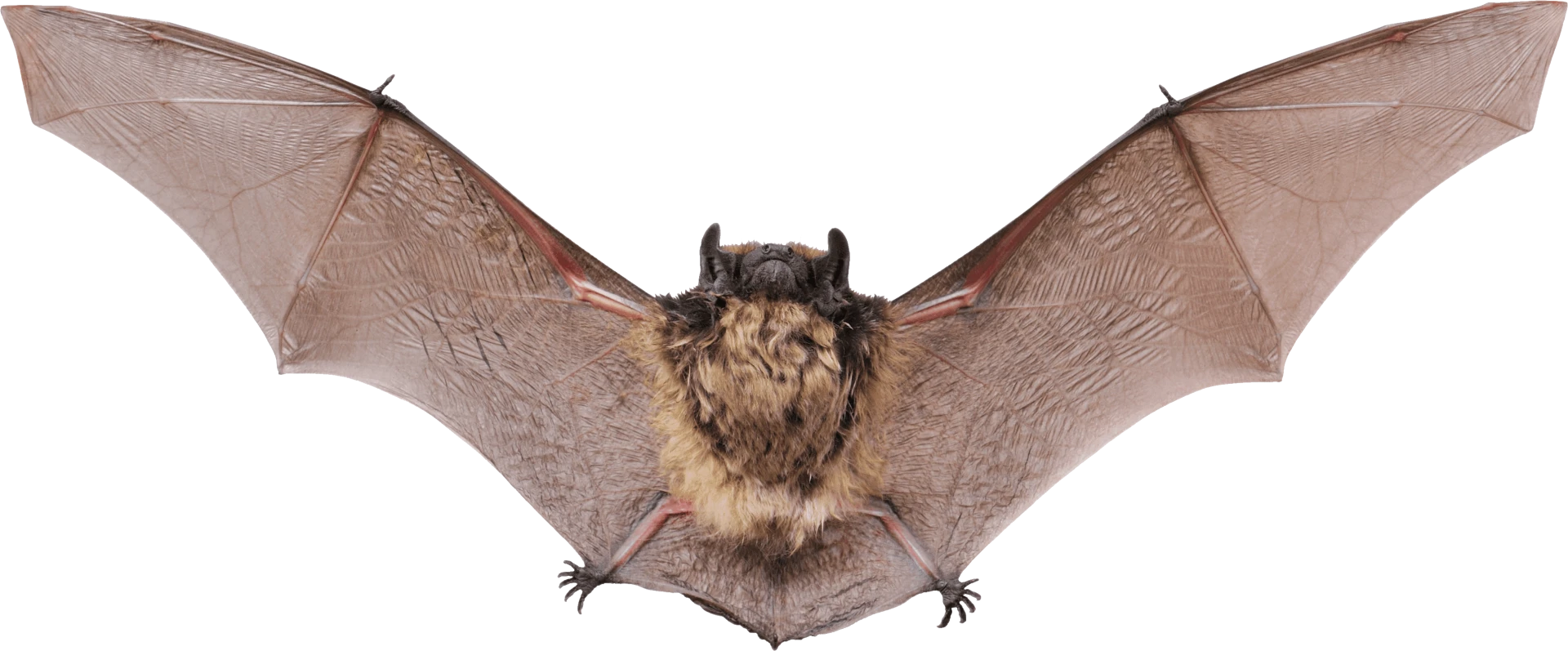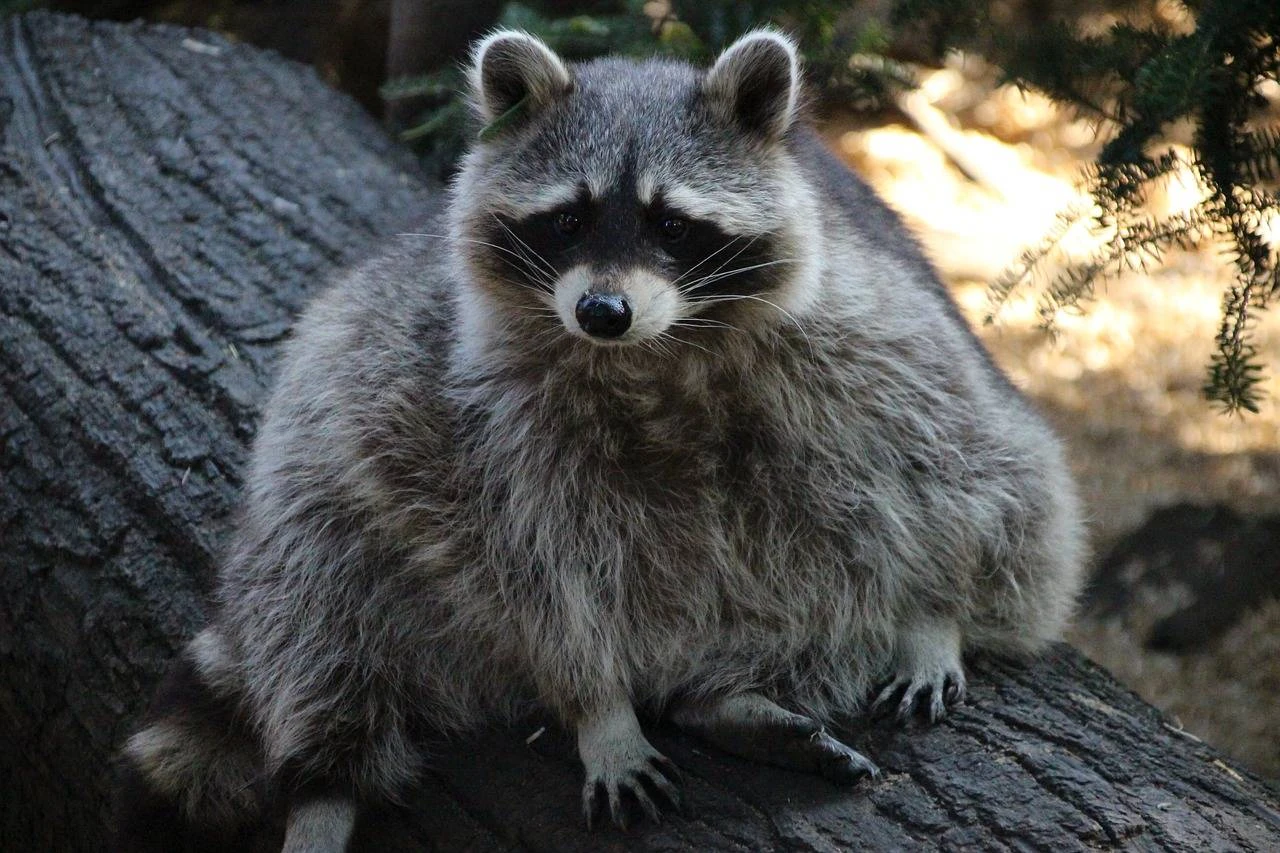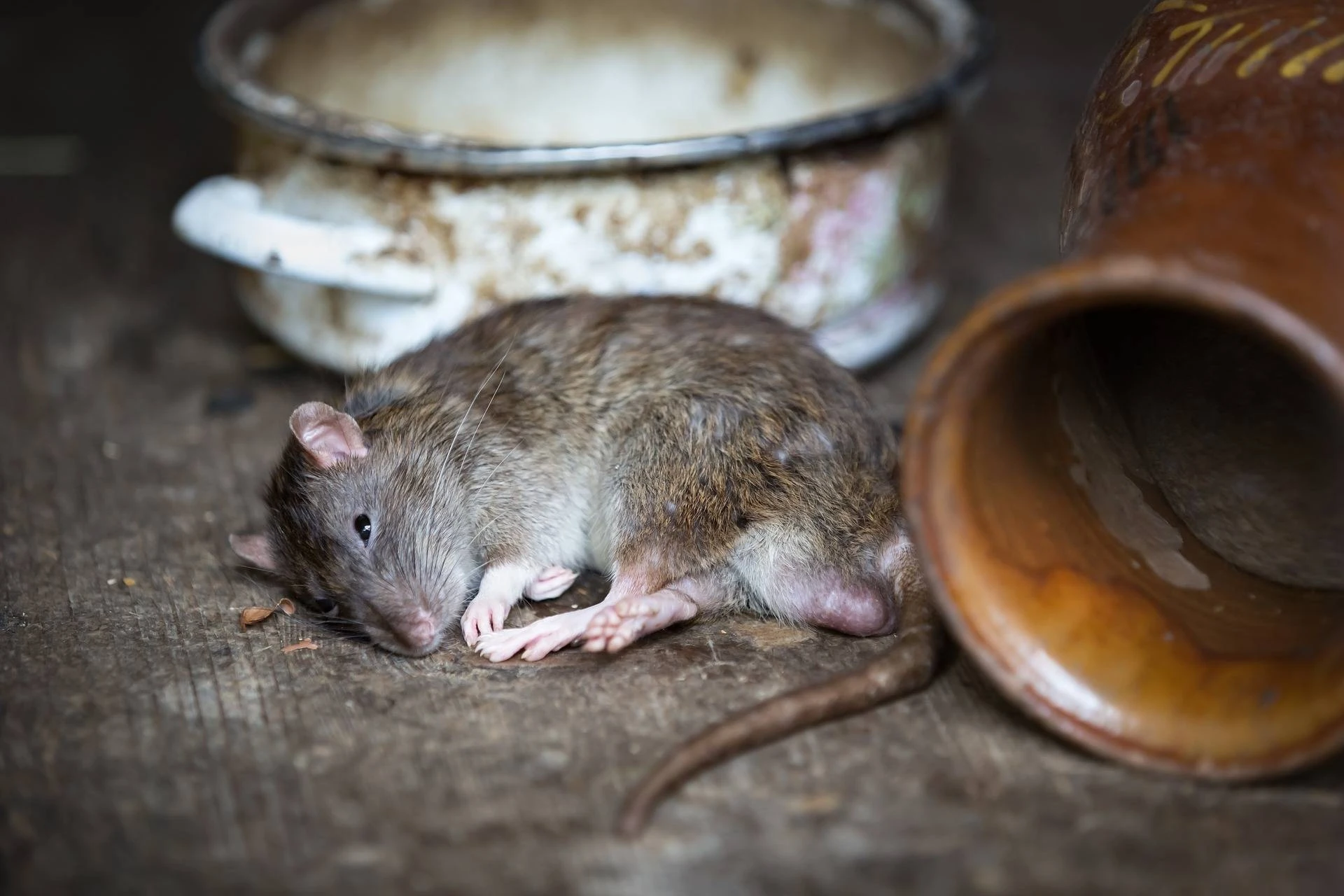Wildlife Related Diseases
| Armadillo Diseases | Geese Diseases |
| Bat Diseases | Pigeon Diseases |
| Coyote Diseases | Mole Diseases |
| Skunk Diseases | Squirrel Diseases |
| Raccoon Diseases | Rat Diseases |
Key Takeaways
- Avoid Direct Contact: Keep a safe distance from wild animals to prevent disease transmission.
- Be Cautious with Animal Droppings: Droppings can carry diseases; use caution when cleaning areas with animal presence.
- Seek Medical Help for Animal Bites: If bitten or scratched by a wild animal, seek medical attention promptly.
- Hygiene and Safety Precautions: Practice good hygiene and safety measures when dealing with wildlife or areas they inhabit.
Armadillos
Armadillos and Leprosy
Armadillos can carry the bacteria that cause leprosy, known as Mycobacterium leprae. In the southern United States, some armadillos are naturally infected with this bacteria, and there have been reported cases of leprosy transmission from armadillos to humans in Texas, Louisiana, and Florida[1][3]. The risk of contracting leprosy from armadillos is considered to be very low[4] , but it is still recommended to avoid contact with these animals for general health reasons[1]. Research has shown that armadillos have become the primary experimental model for leprosy, as M. leprae does not grow in artificial media, and they have been found to transmit the bacteria to humans in specific regions[2][3]. Therefore, it is important to be cautious and avoid contact with armadillos, especially in areas where leprosy is endemic. If there has been contact with an armadillo and there are concerns about leprosy, it is advisable to consult a healthcare provider for further evaluation and, if necessary, treatment[1].
Bats
Bats and Rabies
Bats can transmit rabies to humans and animals. They are the leading cause of rabies deaths in people in the United States. Rabies can spread to people from bats after minor, seemingly unimportant, or unrecognized bites or scratches. It is important to avoid contact with bats, and bats should never be kept as pets. If a person has been bitten or scratched by a bat, rabies post-exposure prophylaxis (PEP) is recommended unless the bat is available for testing and tests negative for rabies. Bites from bats can be very small, and it is not always apparent when a person has been bitten. If a bat is found in the home, it should be captured for testing. If there is a possibility of exposure to a bat, immediate medical advice should be sought to determine the need for rabies vaccination[1][2][3].
Bats and Histoplasmosis
Histoplasmosis is a fungal disease caused by Histoplasma capsulatum, which is found in soil enriched by bird or bat droppings, particularly in the areas drained by the Mississippi and Ohio rivers. Bats can be carriers of this fungus, and histoplasmosis can be contracted through airborne spores in bat droppings. The disease can lead to symptoms ranging from mild influenza to more severe conditions, and it can be fatal, especially in individuals with weakened immune systems. Exposure to bat guano in attics, caves, or other enclosed spaces where bats roost can pose a risk of histoplasmosis. Therefore, it is important to take precautions to avoid inhaling the spores, especially during activities such as cleaning, remodeling, or exploring caves. If individuals have been in contact with bat droppings and develop symptoms such as fever, cough, and fatigue, they should seek medical attention for evaluation and possible treatment[1][2][3][4].
Geese
Geese and Avian Influenza
Wild aquatic birds, including geese, can be carriers of avian influenza viruses. These viruses occur naturally among wild aquatic birds worldwide and can infect domestic poultry. Most avian influenza A viruses are low pathogenic and cause few signs of disease in infected wild birds. However, some strains, such as the highly pathogenic avian influenza (HPAI) viruses, can be extremely infectious and fatal to poultry and some species of wild birds. Geese, especially waterfowl, are considered reservoirs for avian influenza A viruses and can carry and spread the virus without developing symptoms of the disease. Therefore, it is important to be cautious around wild birds and to follow biosecurity measures, especially in areas where avian influenza has been detected. Additionally, avoiding unprotected contact with wild birds, their droppings, and environments where they gather is recommended to reduce the risk of avian influenza transmission to humans and domestic animals[1][2][3].
Geese and Cryptosporidium
Geese can carry the parasite Cryptosporidium, which can cause cryptosporidiosis in humans. This parasite has been found in the feces of Canada geese, and it poses a health risk, particularly to individuals with weakened immune systems and those with gastrointestinal problems. Cryptosporidiosis can lead to symptoms such as extended diarrhea and dehydration, and it can become serious if left untreated. Therefore, it is important to avoid accidental ingestion or inhalation of geese feces, especially in areas where geese are prevalent. Additionally, measures such as reducing the number of geese flocks and implementing hygiene practices can help mitigate the risk of cryptosporidiosis transmission from geese feces to humans[1][2][3].
Pigeons
Pigeons and Histoplasmosis
Histoplasmosis is a disease caused by the fungus Histoplasma, which can grow in pigeon droppings. The severity of the disease depends on an individual’s immune system, and it can range from mild flu-like symptoms to more severe conditions, such as pneumonia. The primary method of transmission is through the inhalation of airborne spores from dried pigeon droppings. Therefore, exposure to areas with accumulated pigeon droppings, such as attics, can pose a risk of histoplasmosis. It’s important to take precautions to avoid inhaling the spores, especially during activities such as cleaning or remodeling. If individuals have been in contact with pigeon droppings and develop symptoms, they should seek medical attention for evaluation and possible treatment. Simple precautions, such as wearing disposable gloves and cleaning up droppings, can help reduce the risk of exposure to the fungus in pigeon droppings[1][2][4][5][3].
Pigeons and Cryptococcosis
This is caused by the fungus Cryptococcus, which can be found in dried pigeon droppings. The disease can be transmitted through the inhalation of airborne spores from the droppings. It is difficult to prevent exposure to cryptococcosis, as the fungus is commonly found in the environment. However, precautions such as wearing dust masks when cleaning areas contaminated with bird droppings, especially pigeons, are recommended. People with weakened immune systems should limit their exposure to contaminated environments.
Pigeons and Psittacosis
This is a disease caused by the bacterium Chlamydia psittaci, which can be carried by pigeons. The severity of the disease can vary, and it can cause flu-like symptoms or more severe conditions, such as pneumonia. It is important to be cautious around pigeons and to take measures to prevent the transmission of psittacosis, especially through the inhalation of dried droppings.
To minimize the risk of these diseases, avoid direct contact with pigeon droppings, especially in enclosed or poorly ventilated areas, and to practice proper hygiene, such as washing hands thoroughly after being in proximity to areas where pigeons roost[1][2][3][4][5].
Coyotes
Coyotes and Rabies
Coyotes are known carriers of rabies, which is spread through bites and scratches. The illness progresses quickly, and early symptoms are similar to those of the flu. Infected individuals may also experience hallucinations, anxiety, tremors, uncontrollable salivation, and even paralysis as the virus attacks the central nervous system. People bitten by a potentially rabid coyote should seek medical attention immediately. However, it’s important to note that the risk of contracting rabies from coyotes is relatively low compared to other wildlife such as raccoons, bats, skunks, and foxes. Vaccination of pets and avoidance of contact with wildlife are important measures to prevent the spread of rabies. If there is a concern about a potential exposure to rabies, seeking medical attention and reporting the incident to the local health department is recommended. [1][2][3][4][5]
Coyotes and Sarcoptic Mange
Coyotes can be affected by sarcoptic mange, a skin disease caused by the infestation of Sarcoptes scabiei, a microscopic burrowing mite. The disease is characterized by hair loss, itching, and secondary infections, and severe cases can be debilitating and even fatal. Mange is highly contagious and can be easily spread among coyote populations. While it is challenging to treat wild coyotes with mange, there are approaches that can be used, but each comes with a significant set of challenges. The most common clinical signs of mange in affected animals are hair loss, thick crusting, and intense itchiness. Sarcoptic mange mites can also infect other species, including humans, but the infection is self-limiting in humans because the mites will not reproduce on a person. If there is a concern about domestic pets becoming infected, it is advisable to contact a veterinarian for preventive medications. If an animal with mange is successfully trapped, precautions should be taken to avoid spreading the mites. The “wild treatment” of mangy animals through the use of bait laced with medication is not endorsed due to a lack of control over which animals consume the bait [1][2][3][4][5].
Moles
Moles, like many other mammals, can carry diseases that can potentially be transmitted to humans and other animals. However, it’s important to note that the risk of disease transmission from moles is generally low due to their solitary and subterranean lifestyle. Here are some diseases associated with moles:
- Rabies: Moles are known to carry rabies, a viral disease that can cause symptoms ranging from tremors and muscle spasms to mental impairment and paralysis, and can be fatal in many cases. Rabies is typically transmitted through the saliva of infected animals, most commonly through biting.
- Lyme Disease: Moles can carry ticks that are hosts for Lyme disease. This bacterial infection can cause symptoms such as fever, headache, fatigue, and a characteristic skin rash.
- Rocky Mountain Spotted Fever: This is another tick-borne disease that moles can potentially spread. It is a bacterial disease that can cause severe symptoms, including fever, headache, abdominal pain, vomiting, and muscle pain.
- Anaplasmosis and Tularemia: These are additional diseases that can be transmitted by ticks that moles may carry.
- Parasites: Moles can carry parasites such as fleas, mites, and ticks, which can potentially transmit diseases to humans and other animals.
When handling moles, it is important to take precautions to minimize the risk of exposure to these diseases. This includes wearing gloves, using disinfectants, and safely disposing of the carcasses. If there is a concern about exposure to diseases from moles, it is advisable to seek medical attention promptly[1][2][3].
Skunks
Skunks and Rabies
Skunks are indeed carriers of rabies, which is a viral disease that affects the central nervous system and can be fatal if left untreated. However, not all skunks carry rabies; only those that are infected with the rabies virus can transmit the disease to humans or other animals through bites or scratches. The likelihood of a skunk being rabid varies by region, with certain areas having higher incidences of rabies in wildlife. For example, in Texas, skunks are listed among the high-risk species for rabies.
To identify a potentially rabid skunk, one should look for abnormal behaviors such as being active during the daytime (since skunks are typically nocturnal), displaying seizures, unusual aggression, vocalizing, stumbling, foaming at the mouth, paralysis, circling movements, disorientation, and a lack of fear of humans. It is important to note that rabies cannot be transmitted through skunk feces, urine, or the sulfuric fluid they spray.
If a person is bitten or scratched by a skunk, or any wild animal, it is crucial to seek medical attention immediately for rabies post-exposure prophylaxis (PEP), which is a series of shots that can prevent the virus from causing illness[9]. To reduce the risk of rabies, people should avoid contact with wild animals, ensure their pets are vaccinated against rabies, and report any sick or strangely behaving wildlife to local animal control authorities [1][2][3][4][5][6][7][8][9][10].
Skunks and Leptospirosis
Skunks are indeed potential carriers of the bacteria that cause Leptospirosis, a disease that can affect both humans and animals. The bacteria, Leptospira, are spread through the urine of infected animals and can survive in water or soil for weeks to months. Humans and animals can become infected through contact with contaminated urine, water, or soil. The bacteria can enter the body through skin or mucous membranes, particularly if there is a cut or scratch, and drinking contaminated water can also lead to infection.
In a study conducted in California, it was found that a significant percentage of skunks tested were PCR-positive for Leptospira spp., indicating that they can be reservoirs for the bacteria and potentially spread the disease[4]. Clinical signs of leptospirosis in pets can include fever, vomiting, abdominal pain, diarrhea, refusal to eat, severe weakness and depression, stiffness, and severe muscle pain.
To prevent the spread of leptospirosis, it is important to avoid contact with environments that may be contaminated with the urine of wild animals, including skunks. If there is a concern about exposure to leptospirosis, it is advisable to consult a healthcare provider or veterinarian for further evaluation and possible treatment. [1][2][3][4][5].
Squirrels
Squirrels and Tularemia
Squirrels can indeed be carriers of the bacteria that cause Tularemia, a disease that can affect both humans and animals. The bacteria, Francisella tularensis, are found in certain animals, especially rodents, rabbits, and hares, which include squirrels.
Tularemia can be transmitted to humans in several ways, including through the handling of infected animals, such as squirrels. This can occur when hunting or skinning infected animals. It can also be transmitted through the bite of an infected tick or fly.
Symptoms of tularemia in humans can vary depending on how the bacteria enter the body. They generally start with symptoms such as fever, chills, and swollen lymph nodes. Other symptoms may include skin or mouth ulcers, diarrhea, muscle aches, joint pain, cough, and weakness. Symptoms usually appear 3 to 5 days after exposure to the bacteria, but may be as short as 1 day or take as long as 14 days.
If a person suspects exposure to tularemia, it is crucial to seek medical attention immediately. Tularemia can be treated with antibiotics, and early treatment is essential for the best outcome.
To prevent tularemia, it is recommended to use insect repellent, wear gloves when handling sick or dead animals, avoid mowing over dead animals, and ensure that water is from a safe source. Currently, there is no vaccine available for general use against tularemia[1][2][3][4][5].
Squirrels and Leptospirosis
Squirrels can indeed be carriers of the bacteria that cause Leptospirosis, a disease that can affect both humans and animals. The bacteria, Leptospira, are spread through the urine of infected animals and can survive in water or soil for weeks to months. Humans and animals can become infected through contact with contaminated urine, water, or soil. The bacteria can enter the body through skin or mucous membranes, particularly if there is a cut or scratch, and drinking contaminated water can also lead to infection.
In a study conducted in Japan, it was found that Leptospira was present in squirrels imported from the United States, indicating that they can be reservoirs for the bacteria and potentially spread the disease. Another study conducted in Nigeria also highlighted the role of squirrels in the epidemiology of leptospirosis, emphasizing the need for proper education regarding squirrels as potential carriers of Leptospira.
Clinical signs of leptospirosis in humans can include high fever, headache, chills, muscle aches, vomiting, jaundice (yellow skin and eyes), red eyes, abdominal pain, and diarrhea. Some infected persons may have no symptoms at all. Without treatment, leptospirosis can lead to kidney damage, meningitis, liver failure, respiratory distress, and even death.
In pets, signs of infection include fever, weight loss, anorexia, abnormal milk production, anemia, blood in the urine, muscle weakness, jaundice, and pulmonary congestion (fluid in the lungs).
To prevent leptospirosis, it is recommended to avoid contact with fresh water or soil that may be contaminated with animal urine, avoid touching objects that may be contaminated with animal urine, such as animal bedding, and not to wade, swim, or put your head in floodwaters or water from lakes, rivers, or swamps [1][2][3][4][5].
Raccoons
Raccoons and Rabies
Raccoons are indeed carriers of the rabies virus, which is a viral disease that affects the central nervous system and can be fatal if left untreated. Raccoons, along with skunks and foxes, are the terrestrial animals most often infected with rabies in the United States. All bites by such wildlife must be considered a possible exposure to the rabies virus, and postexposure prophylaxis (PEP) should be initiated as soon as possible following exposure unless the animal has been tested and determined not to be rabid.
The symptoms of rabies in raccoons can include unusual aggression (furious rabies), confusion, disorientation, stumbling, paralysis, and even foaming at the mouth. However, it is important to note that not all raccoons with abnormal behaviors are rabid, as other diseases or exposure to toxins can cause similar symptoms.
If a person is bitten or scratched by a raccoon, it is crucial to seek medical attention immediately for rabies PEP, which is a series of shots that can prevent the virus from causing illness[1]. To reduce the risk of rabies, people should avoid contact with wild animals, ensure their pets are vaccinated against rabies, and report any sick or strangely behaving wildlife to local animal control authorities[1][2][3][4][5].
Raccoons and Baylisascaris
Raccoons are indeed carriers of Baylisascaris, a roundworm parasite that can lead to severe illness in humans and other animals. Raccoons infected with Baylisascaris roundworms pass parasite eggs in their feces. These feces often accumulate in common sites, known as latrines, which are frequently located near areas where people live, such as backyards, tree stumps, sandboxes, and attics.
People become infected by accidentally swallowing eggs from contaminated hands, soil, or objects contaminated with raccoon feces. Infection can also occur by breathing in the microscopic eggs that may become airborne. Raccoons carrying Baylisascaris roundworms have been found throughout the United States.
Symptoms of Baylisascaris infection can appear as soon as 1 week after ingesting eggs and may include nausea, tiredness, loss of coordination, vision loss, liver enlargement, lack of attention to people and surroundings, loss of muscle control, blindness, and even coma.
Baylisascaris infection is difficult to diagnose in humans as there are no widely available tests, so the diagnosis is often made by ruling out other diseases. Treatment options are limited, with no drug found to be completely effective against Baylisascaris infection in people. However, Albendazole has been recommended for some cases.
Prevention of Baylisascaris infection involves avoiding contact with raccoons and their feces, washing hands after working or playing outdoors, and not keeping, feeding, or adopting wild animals, including raccoons, as pets[3]. If a raccoon latrine is found on your property, it should be cleaned carefully to avoid contaminating hands and clothes. Baylisascaris eggs are hard to kill; most chemicals do not eliminate them, but heat kills the eggs instantly.
In summary, while raccoons are a common carrier of the Baylisascaris roundworm, human infection is rare but can be severe. Prevention measures, such as avoiding contact with raccoons and their feces and practicing good hygiene, are crucial in reducing the risk of infection[1][2][3][4][5].
Raccoons and Leptospirosis
Raccoons can carry Leptospira bacteria, which can cause leptospirosis in humans and animals. A study conducted in Indiana, USA, found that raccoons carry leptospiral organisms in their kidneys, with the leptospires predominantly belonging to the L. interrogans species and the Grippotyphosa serogroup. The study detected antileptospire antibodies in a significant percentage of the raccoons, indicating their potential as carriers of the bacteria.
Leptospirosis is a zoonotic disease that can occur in both people and a wide range of animals, including dogs. It is caused by Leptospira bacteria that are carried in the urine of infected animals, including raccoons. People and animals can get infected when water or soil contaminated with the urine of infected animals comes into contact with their eyes, nose, mouth, or broken skin, or is swallowed.
The disease can cause symptoms such as fever, headache, chills, muscle aches, vomiting, jaundice, red eyes, abdominal pain, diarrhea, and in some cases, serious liver and kidney problems. Leptospirosis is a common bacterial disease in raccoons, and transmission is thought to occur via urine contamination of feed and water.
In summary, raccoons can carry Leptospira bacteria and may serve as reservoir hosts for leptospirosis. It is important to take precautions to avoid contact with raccoon urine and to practice good hygiene, especially when handling potentially contaminated water or soil. If there is a concern about exposure to leptospirosis, it is advisable to consult a healthcare provider for further evaluation and possible treatment[1][2][3][4][5].
Rats
Rodents and Hantavirus
Hantavirus is a serious and potentially fatal disease spread by infected mice and rats. In North America, the deer mouse, white-footed mouse, rice rat, and cotton rat are known carriers of hantavirus. The virus is found in rodent urine, saliva, and feces, and can be easily released in the air when disturbed by rodents or human activities, such as sweeping or vacuuming. Hantavirus pulmonary syndrome (HPS) is a severe lung disease caused by hantavirus infection, and it can be fatal. Early symptoms include fever, fatigue, and muscle aches, followed by difficulty breathing and a rapid heartbeat. There is no specific treatment for HPS, but early recognition and medical care in an intensive care unit can improve the outcome. To prevent hantavirus infection, it is important to avoid contact with rodents and to safely clean up and disinfect any signs of them in your home, including urine, feces, or nests. It is also recommended to avoid wild mice and rats, and to take precautions when working in areas with potential rodent infestations, such as construction sites or farm buildings. If there is a concern about hantavirus infection, it is advisable to seek medical attention promptly[1][2][3][4][5].
Rats and Leptospirosis
Rats are chronic asymptomatic carriers of Leptospira spp., maintaining the spirochetes in their proximal renal tubules. They have also been identified as the most important reservoirs and sources of Leptospirosis, a significant but neglected disease of humans and animals that is increasing in prevalence. Rats abundant in urban and peridomestic environments are the most important reservoirs and sources of Leptospirosis. The disease is potentially fatal in humans and is under-reported and emerging. Rats are the main reservoirs for pathogenic Leptospira spp., but diagnosis in these animals is difficult, and their infection, which does not induce symptoms, usually goes unnoticed. Therefore, it is recommended that the health surveillance schemes of rodents in animal care facilities target pet rodents, and that new human cases of leptospirosis should be carefully documented in order to identify contact with pet rodents. People purchasing pet rodents or living/working in close contact with such animals should be aware of the potential risk of Leptospira infection. Therefore, it is important to be cautious around rats and to take measures to prevent the transmission of Leptospirosis, especially through contact with pet rodents or environments where rats are prevalent. If there is a concern about exposure to Leptospirosis, it is advisable to consult a healthcare provider for further evaluation and possible treatment[1][2][3][4][5].
Rat-bite fever (RBF) is a bacterial disease that spreads through infected rats or rodents, usually from a bite or scratch. It is caused by two different bacteria: Streptobacillus moniliformis and Spirillum minus. Symptoms of RBF typically include fever, muscle and joint pain, nausea, vomiting, headache, sore throat, and a rash on the hands and feet. If left untreated, RBF can lead to severe disease and even death. The infection is usually treated with antibiotics such as Penicillin or Tetracyclines. It is important to seek medical attention immediately if you develop RBF symptoms after a rat or other animal scratch or bite, or after being in an area where rats live. Additionally, it is recommended to thoroughly wash and cleanse any wound caused by a rat or rodent bite or scratch to reduce the risk of infection. If you have any of the symptoms of RBF after contact with rats or other rodents, it is important to see a healthcare provider promptly and inform them about your contact with rodents[1][2][3][4][5][6][7][8].
Opossums
Opossums, particularly those in North America, can carry a variety of diseases that can potentially be transmitted to humans and other animals. These include:
- Leptospirosis: This bacterial disease is spread through the urine and feces of the opossum and can infect humans and pets.
- Tuberculosis: Opossums can potentially carry this bacterial disease.
- Relapsing Fever: This is a bacterial infection that can be carried by opossums.
- Tularemia: This is a zoonotic disease, meaning it can be transmitted from animals to humans. It can occur when an opossum is infested with fleas, ticks, mites, and lice.
- Spotted Fever: This is another disease that opossums can carry.
- Toxoplasmosis: This is a parasitic infection that opossums can carry and transmit through their feces. It poses a severe risk for pregnant women and immunocompromised persons.
- Coccidiosis: This disease is spread by a microscopic parasite found in opossum feces. While opossums are immune to the disease, they can spread it to other animals, including pets, and humans.
- Trichomoniasis: This is a parasitic disease that can be carried by opossums.
- Chagas Disease: This is a tropical parasitic disease that can be carried by opossums.
- Equine Protozoal Myeloencephalitis (EPM): This disease affects horses and can be transmitted when they ingest opossum feces.
In addition to these diseases, opossums can also be infested with fleas, ticks, mites, and lice, which can carry other diseases. Despite common misconceptions, it’s extremely unusual for opossums to carry rabies due to their lower body temperature[1][2][3][4][5].
Recap On Wildlife Related Diseases in Kentucky
In Kentucky, nuisance wildlife can be carriers of several diseases that can affect humans and other animals. These diseases include:
- Leptospirosis: This bacterial disease can affect both humans and animals. It is spread through the urine of infected animals and can survive in water or soil.
- Histoplasmosis: This is a fungal disease caused by Histoplasma capsulatum, which can be found in soil enriched by bird or bat droppings.
- Avian Influenza, Avian Pox, Botulism, Bovine Tuberculosis, Canine Heartworm, Chronic Wasting Disease (CWD), and Epizootic Hemorrhagic Disease (EHD): These diseases are monitored by the Kentucky Department of Fish & Wildlife.
- Canine Distemper: Raccoons in Kentucky have tested positive for this disease, which can affect various wildlife species.
When handling nuisance wildlife, it is important to take precautions to minimize the risk of exposure to these diseases. This includes wearing gloves, using disinfectants, and safely disposing of the carcasses. If there is a concern about exposure to diseases from nuisance wildlife, it is advisable to seek medical attention promptly[1][2][3][4][5][6][7][8][9][10][11][12].
